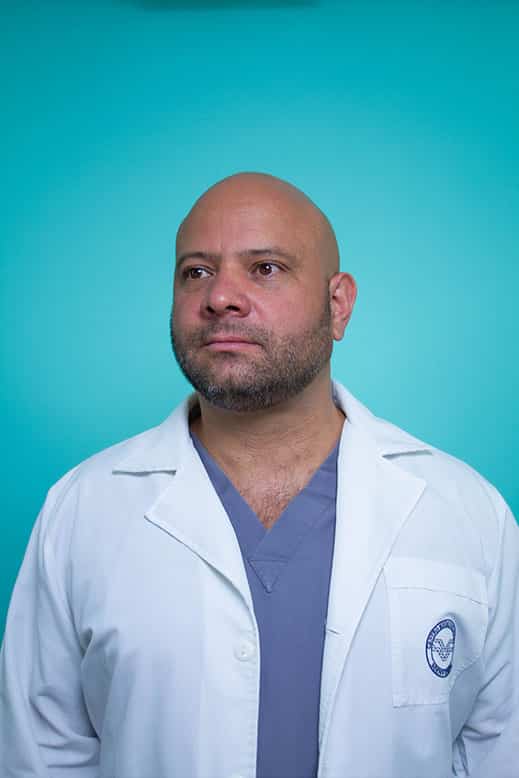Dental implants are a very effective solution to improve our esthetics and dental health.
If we have lost any dental piece, these titanium fixations provide us with esthetic, but also functional benefits.
Despite their many advantages, problems can sometimes arise with dental implants.
However, they are very rare because their success rate is 97.5%.
Problems prior to implant placement
Before starting the intervention, the implantologist performs a preliminary study to know the state of the patient’s mouth.
In this way, possible diseases that prevent the correct execution of dental surgery are ruled out.
Below, we explain the possible problems that may arise and how to solve them.
Bone grafting
Having a sufficient amount of bone is essential for the implant to have a solid hold.
The graft is necessary when the remaining bone, that is, the part of the natural bone that remains in the tooth, is not sufficient for the implant to heal.
The diagnosis to know if the patient has the right bone dimension is made by a 3D dental CT scan.
This X-ray device helps to accurately plan the surgery and facilitates the intervention to achieve faster and more predictable results.
Once the practitioner has decided that the patient needs to regenerate bone, two systems are available.
Emdogain
This is a gel with proteins that stimulates the regeneration of the bone surface from the patient’s own cells.
With this method, the supporting tissue of the dental piece is formed again.
It is important to note that Emdogain is used in natural teeth, so it is not indicated for people with implants.
For people who are going to have an implant but need a larger bone surface, the second alternative is Bio-oss.
Bio-oss
It is used in patients who need more bone surface before undergoing implant surgery.
It is a material formed by hydroxyapatite and calcium, elements that form the dental squares.
It can take three to four months to fully integrate with the bone.
Pay attention to the evolution of your implant the days after the intervention to detect possible problems as soon as possible.
Sinus lift
Another problem that the dentist can detect thanks to X-rays is insufficient bone height in the upper jaw.
In these cases, a sinus lift is necessary. This is a cavity located in the upper jaw and is connected to the nostrils.
The patient undergoes a surgical technique called sinus lift, which vertically increases the amount of bone available in areas with bone loss and therefore do not allow a proper attachment of the prosthesis.
Normally, it is necessary to wait six months between the sinus lift and the implant surgery.
However, in some cases, the prosthesis can be placed immediately after the sinus lift is completed, depending on the jaw structure of the person.
After studying each case and having carried out the required procedure, the implantologist verifies the correct regeneration of the bone and proceeds to place the prosthesis.
Call Us and We Will be Happy to Attend your Case
Some problems after dental implant placement
Although, as a general rule, the placement of dental implants does not hurt, there is a possibility that problems or discomfort may arise during the postoperative period.
Problems with healing
Osseointegration usually takes 3 months. If this is not the case, it will be a symptom of poor healing.
This is one of the first inconveniences that may appear after the placement of the crown.
This problem is more common in traditional implants than in immediate loading implants, which are those that are placed in a single day.
If after the first two or three days after the intervention you still feel pain, it is important that you go to the dental clinic to consult your implantology professional.
Dental implants are successfully osseointegrated in 97.5% of cases, making it a very safe procedure.
Peri-implantitis
It is an oral pathology that affects the bone that supports the socket. Before it fully develops, it begins with mucositis, which affects the soft tissue.
Peri-implantitis swelling occurs due to inflammation of the area surrounding the sheath and, if not detected in time, can lead to the fall of the prosthesis.
To prevent peri-implantitis it is necessary to follow a correct oral cleaning routine and pay attention to the dentist’s recommendations.
It is advisable to avoid bad habits such as smoking, which can negatively affect the implant.
Implant rejection
The rejection of dental implants only occurs in 2.5% of cases and may be due to various causes, such as poor oral hygiene, peri-implantitis or undesirable habits such as smoking.
As a consequence, a white tissue starts to grow between the bone and the implant, which will prevent the prosthesis from holding properly, making the case unusable for loading and chewing.
This does not mean that the person cannot wear implants, but that it is necessary to remove them in order to undergo a new surgery.
Dental prostheses can have problems
Enlarge image
DISCOMFORT IN AN IMPLANT
Contrary to what it may seem, the rejection is not caused by an incompatibility of the organism with the material of the crown.
Prostheses are made of titanium, a component that is totally biocompatible with the human body.
In addition, titanium facilitates the bond with the bone, achieving a durable and secure bond that allows the prosthesis to withstand chewing loads.
Tartar accumulation
Although it cannot have caries, tartar can accumulate on the implant if the person does not have an adequate oral hygiene.
As a consequence of the dirt and bacteria, the gum is susceptible to infections, even developing periodontitis in the most extreme cases.
For this reason, it is important not to forget to have regular check-ups to avoid any type of complication.
Mechanical problems
We have commented on the complications that can arise due to the placement of implants. But there are some technical problems whose origin lies in the prosthesis itself.
Loosening of screws
Among the most frequent (and less serious) mishaps we find the loosening of screws.
It means that the screw that joins the crown and the prosthesis has lost strength. Its solution is as simple as going to the dental clinic to retighten it.
The screw goes inside the gum.
Enlarge image
PROSTHESIS SCREW
Crown fracture
It is very rare for this to happen, since titanium is a very resistant material prepared to withstand the load of chewing.
However, if the crown fractures or has small cracks, it is necessary to go to the dental clinic to have it repaired as soon as possible.
This problem can occur in patients with bruxism and high jaw tension, who exert excessive pressure on the sheath, contributing to its weakening.
With proper care, an implant can last a lifetime and give great functional and esthetic results.
Proof of this are the testimonials of our patients, who already have a healthy and lasting smile thanks to dental prostheses.



